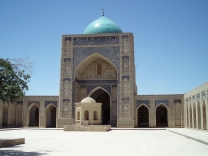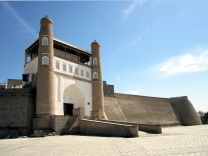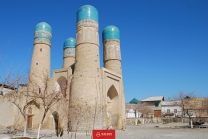No video yet

Lyab-i Hauz
Lyab-i Hauz (from Persian: لب حوض meaning: by the pond), or Lyab-i Khauz, is the name of the area surrounding one of the few remaining hauz (ponds) that have survived in the city of Bukhara. Until the Soviet period there were many such ponds, which were the city's principal source of water, but they were notorious for spreading disease and were mostly filled in during the 1920s and 1930s. The Lyab-i Hauz survived because it is the centrepiece of a magnificent architectural ensemble, created during the 16th and 17th centuries, which has not been significantly changed since. The Lyab-i Hauz ensemble, surrounding the pond on three sides, consists of the Kukeldash Madrasah (1568-1569) (the largest in the city (on the north side of the pond), and of two religious edifices built by Nadir Divan-Beghi: a khanaka (1620) (a khanaka is a lodging-house for itinerant Sufis) and a madrasah (1622) (that stand on the west and east sides of the pond respectively. The small Qazi-e Kalyan Nasreddin madrasah (now demolished) was formerly located beside the Kukeldash...









